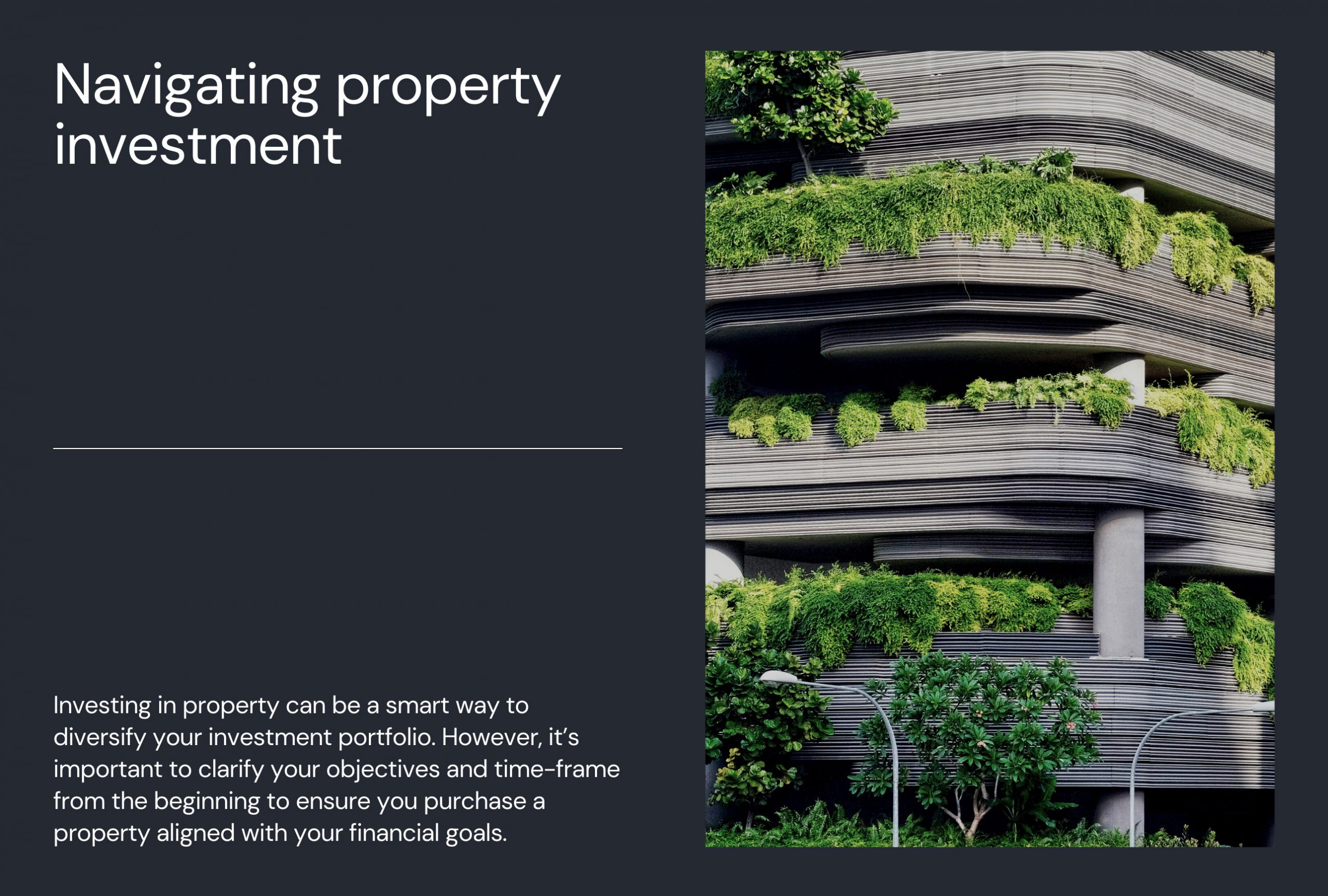Are you thinking about joining the 2.2 million Australians who own an investment property? For investors looking to expand their portfolio, purchasing an investment property can be a wise move. Property tends to offer a secure, fixed return and offers much lower risk and greater security than other investment options.
However, not all properties are worthy of investment and the costs of purchasing property can be an expensive barrier to entry for potential investors. To help you make an informed decision, discover what investment strategies exist, the types of loans you can access as well as the key questions to ask yourself when purchasing an investment property.
What is negative gearing vs. positive gearing?
Both of these terms are regularly thrown around in the media, but what do they actually mean? Gearing is all about borrowing money to purchase an asset. There are two main types of gearing: negative and positive, and each comes with its own benefits and disadvantages for investors.
Negative Gearing
This is the process of borrowing money to purchase an asset (such as a property) where the costs of owning this asset are more expensive than the income it generates. The result is that you’re making a loss (and roughly 60% of property investors in Australia follow this approach). While it might sound like an ineffective investment strategy, investors can actually deduct these losses from their taxable income.
One of the main reasons why investors choose this investment strategy is to take advantage of the property’s long-term capital growth (jargon for making a profit when selling the property). In effect, investors who negatively gear aim to minimise their losses until it comes time to sell their investment property. If they’re successful, they will make a profit that is greater than the loss they’ve incurred from the rental shortfall.
Positive Gearing
In contrast, positive gearing means borrowing money to buy an asset where your income (rental returns) is more than your expenses. The result is that investors receive a consistent stream of income from their investment property. Plus, they may also make a capital gain too if the property’s value increases over the lifetime of ownership.
However, the tax implications are less attractive in the case of this investment strategy. As you’re earning income from your property, you’ll need to pay tax at your marginal tax rate on this income.
We would strongly encourage a chat with a financial adviser or your accountant before making any decisions on choosing either a positively or negatively geared property investment strategy. While both have their pros and cons, the success of either strategy is highly dependent on your personal circumstances, as well as your long-term investment goals. Please promise us you’ll get objective advice on this, ok? Ok great.

What repayment types are available?
When securing a home loan for an investment property, it’s important to weigh up your options. As the goal is to maximise your returns, securing the most cost-effective loan option can help you save on repayments over the life of your loan.
Interest-only loans
This type of home loan means your repayments only cover the interest on the amount you’ve borrowed (known as the ‘principal’). During the interest-only period, the amount you’ve borrowed won’t reduce as you’re only paying off interest. Once this period is over, you’ll switch to a principal and interest loan (more on that below).
While the repayment costs are initially lower, you’ll often end up paying more once your interest-only period ends. Plus, your repayments may increase once you switch to a principal and interest loan, and there is a risk you won’t build any equity if your property doesn’t grow in value during the interest-only period.
However, as an investor, you can claim higher tax deductions from your investment property which may offset these higher costs.
Principal and interest loans
The amount of money you borrow from your lender (minus your repayments) is known as the ‘principal’. Your lender will also charge interest on top of the principal, which is calculated based on the interest rate and amount of money you’ve borrowed.
A principal and interest loan simply means repaying both the principal and interest. This is done by diving your repayments into two portions: one part going towards the interest due on your outstanding loan amount and the rest going towards the loan itself.
The benefit of a principal and interest loan is that you’ll pay less interest across the life of your long. You’ll also generally receive a lower interest rate, however, these can vary greatly between lenders which makes comparing rates an important step to take.
What to consider when purchasing an investment property
There’s a range of factors to consider before purchasing an investment property. Unlike purchasing a home to occupy for yourself, an investment property needs to be a financially savvy option to ensure you receive a good return on your investment. Here are five key questions to ask yourself when purchasing an investment property.
1. How long will you hold this investment property?
For longer-term investments, purchasing a property in an emerging area could be a wise move to secure real estate in an untapped or growing market. However, current rents are typically lower in these areas which means you’ll need to invest over the long-term to make a good return. If you’re looking to hold this property for a shorter-term, consider purchasing in a more stable, valuable area where rental demand is higher.
2. Do you want to add value or make improvements to the property?
There are hefty additional costs associated with renovating or upgrading a property. While making improvements can add to your investment property’s resale value and help you attract higher quality, long-term tenants, it can be easy to overspend without seeing a tangible increase in the property’s value. Plus, you’ll need to factor in an additional 15% on top of your planned costs for any unexpected council fees.
3. How much income are you hoping to gain from your investment property?
Do you want a property that will grow in value (but receive lower rental returns)? Or, are you looking for middle-of-the-range growth but a higher rental yield? This will help you purchase the right investment property to suit your investment strategy and goals.
4. Have you accounted for the hidden costs of investment property ownership?
It’s also important to factor in any expenses you’ll need to make to sustain the property on a monthly basis, as these costs will take away from your overall investment returns. For example, if you need to spend $5,000 per year in rates, maintenance, insurance, and agent fees on your property (on top of your loan repayments), you’ll need to find a property with low strata fees and a solid rental income to make this a worthy investment.
5. Market Conditions
An Australian investment property isn’t necessarily a licence to print money, even though recent market growth might suggest otherwise (we’re looking at you WA circa 2014). DO. YOUR. RESEARCH.
Investing in property can be a smart way to diversify your investment portfolio. However, it’s important to clarify your objectives and time-frame from the beginning to ensure you purchase a property aligned with your financial goals.
The finance information contained in this post is general advice only, and doesn't take into account your personal circumstances or goals. You should always reach out, or seek professional advice, before making any financial decisions.
